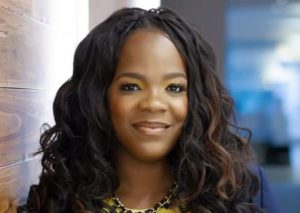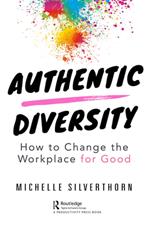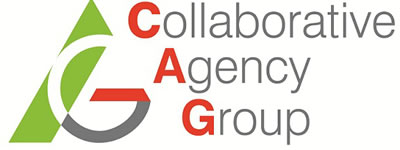
24 Nov Michelle Silverthorn

Speaker: MICHELLE SILVERTHORN
Founder & CEO of Inclusion Nation, Author of Authentic Diversity, How to Change the Workplace For Good.
Speech Topics Include:
- Change the Rules, Change The World: How To Make Diversity And Inclusion Matter For Good
- They Still Call Me the Nanny: How To Recognize, Interrupt, And End Implicit Bias
- This Is the End Game: How To Sponsor Women Professionals For Success
- Welcome To My Generation: How To Overcome Generational Differences At Work
- Millennials In Color: How To Recruit, Train And Lead America’s Most Diverse Generation
Michelle Silverthorn believes that diversity and inclusion needs a new voice for a new generation. A recognized expert in organizational inclusion, Michelle has worked with Fortune 500 companies, tech start-ups, non-profit organizations, universities, and numerous companies across every industry. From thousand-person conferences to twenty-person workshops, Michelle equips all of her audiences with the knowledge and skills to finally move forward on diversity and inclusion.
A graduate of Princeton University and the University of Michigan Law School, Michelle practiced for two large law firms in New York and Chicago. She then transitioned into the education field where she trained thousands in-person and online. She has been featured on NPR, PBS and in several publications including the Chicago Tribune and Fortune Magazine. She is a TEDx speaker and the author of the best-selling book, Authentic Diversity, How to Change the Workplace For Good.
Michelle previously worked as an arts and entertainment journalist in Trinidad and Tobago, a researcher in Puno, Peru and Geneva, Switzerland, and a volunteer teacher in Gaborone, Botswana and Almaty, Kazakhstan. Michelle grew up in the Caribbean and now lives in Chicago with her husband Daniel and their two daughters.
Change the Rules, Change The World: How To Make Diversity And Inclusion Matter For Good
Leadership in corporate America is predominantly white, and the statistics haven’t budged in the past twenty years. Companies hire large numbers of professionals of color. However, the rate at which these employees rise throughout the workforce and succeed in their industries remains staggeringly low.
For decades, we’ve heard variations on the same theme on how to increase organizational diversity – change how we recruit, increase mentoring and opportunities, improve the pipeline. Let’s write more reports! Let’s track more data! No, let’s issue a statement on how much diversity matters! We have tried them all, and we have still not moved. We need a new approach. Otherwise, we will remain exactly where we are, with the C-suite and the leaders beneath them continually promoting people who look, act, and work like them. We are stuck on diversity and inclusion. We need to move up.
In Change the Rules, Change the World, we explain how to transform diversity and inclusion from mere lip service into the very heart of how we work. We dive into how to include not just diverse people into our organizations, but also their diverse perspectives, their diverse lives, their diverse values, and their diverse work, to finally make diversity count.
They Still Call Me the Nanny: How To Recognize, Interrupt, And End Implicit Bias
In 2018, Starbucks closed its stores after a manager called the police on two black men waiting at a table. The months that followed brought a rash of incidents of white people calling the police on people of color napping in a college dorm, BBQing in a public park, touring a university campus, and selling water on the side of the road. Each time an incident was reported, cries of racism came to the fore. And yet, if you asked any of those people, they likely would say, “I’m not racist,” “I don’t see color,” or “I don’t have a biased bone in my body.” How can we reconcile that?
For many, that’s where implicit bias enters. As a shortcut for our thinking, implicit bias plays a crucial role in how we perceive people who are different, and how those first impressions can dramatically affect our perception of another person. How can we transform our thinking so we see people for who they are, not who we think they should be?
In They Still Call Me the Nanny, we first discuss how many of us have been socialized to be “color-blind” or “identity-blind” when it comes to seeing other people, despite the overwhelming evidence that we all see racial, gender, and other identity differences. We then look at the transforming demographics of our nation and the world, and how continued identity fragmentation necessitates that we engage with difference. Next, we address how implicit bias tricks our brain into thinking we are identity-blind, when in fact we are making instant deductions, impressions, and observations about everyone we meet. Finally, using interactive exercises, we witness our own implicit biases at work and see how those biases affect our perceptions of other people. We conclude with strategies to successfully interrupt implicit bias on a daily basis, and create a workplace where we can all see behind the stereotype to the real person within.
This Is the End Game: How To Sponsor Women Professionals For Success
Racism. Privilege. #MeToo. #BlackLivesMatter. For the past several years in this country, words have become so charged that debates and discussion quickly veer into anger and accusations. So goes the nation, so goes the workplace.
At Inclusion Nation, our founding principle is this: we cannot move forward on diversity and inclusion in the workplace unless we have the difficult conversations about race, gender, identities, and the assumptions we make about each other. But having those conversations without the right preparation can lead to anger, frustration, and the belief that tackling difference is not worth all the conflict it brings. That’s where So Goes the Nation, So Goes the Workplace comes in.
In the workplace, many of us no longer need to leave our siloed workspace to have real conversations with real people in real life. We also live in an online world where we can have our opinions validated and reinforced without any counterweight. That online self-segregation extends to our homes, neighborhoods, and social circles, where we may not spend significant time with anyone whose opinions differ drastically from our own.
But challenging our own opinions is necessary. To create a culture of authenticity, belonging, and inclusion in the workplace, we need to have genuine conversations about what makes us different. Those conversations, and the resultant learning, form the basis of successful mentoring relationships, collaborative teams, an engaged workforce, and the opportunity for everyone to understand the struggles – both visible and not – that their colleagues face.
In So Goes the Nation, So Goes the Workplace, we start with the possibility, or why these differences matter in our workplace. Then we move into the reality, using charged phrases and divided identity groups to understand how we became polarized in our silos. Next, we address the solution – civility – the fundamental basis of our shared civilization. Finally, we end with the ten steps we can all take starting now to design a civil workplace, and rebuild a civilization that includes everyone.
Welcome To My Generation: How To Overcome Generational Differences At Work
Over the past century, the workplace has evolved from a space where two or three generations worked together in a clearly structured hierarchy to one where five generations jostle for position in a swiftly-transforming professional environment. Each generation brings its own history, its own expectations, and its own standard of communication that may differ slightly or dramatically from their colleagues in other generations.
With those tensions come others, in particular, stereotypes and beliefs about the behaviors of younger and older generations. The challenges range from deceptively simple ones like communicating with customers and work attire, to more complex ones like the roles of well-being and social justice in corporate America.
To create a successful workplace where everyone feels like they are included and belong, we need to learn how different generations came to their varied standards of professionalism, and challenge the stereotypes that arise when we only have incomplete understandings of the generations, their histories, and the realities of their workplace.
In Welcome to My Generation, we navigate through a world of inter-generational communication and conflicting dialogue. We learn the history of the five generations in the workplace, how each generation puts its own unique stamp on organizations, and how best to recognize, engage with, and grow from the challenges presented by these differences.
Millennials In Color: How To Recruit, Train And Lead America’s Most Diverse Generation
Heard a joke about millennials lately? I bet you’ve heard a thousand. The youngest generation in the workplace has been discussed, analyzed, and criticized by anyone who has ever met a 20-something-year-old. And yet, as millennials swiftly approach 65% of the workforce, one subset of millennials has not undergone that same thorough analysis – millennials of color.
See, most of what we know about millennials is based on research done on white, middle-class millennials. But as the past decade has clearly demonstrated, unless leaders are willing to engage with their millennial workers’ multiple intersectional identities, they will lose diverse employees who they have spent years training and developing, or will fail to recruit these employees in the first place.
That’s where Millennials in COLOR steps in. Working with a newly-hired millennial professional as he progresses through his large organization, attendees will learn best practices for recruiting, hiring, and leading diverse millennials in the workplace. How do you recruit diverse millennials? Go to the schools and neighborhoods where they live, engage in their communities online, and laterally recruit executives who represent the identities of the millennials you are trying to bring in. How do you train diverse millennials? Provide them with knowledge, skills, and abilities that demonstrate that you understand the basic challenge of any person of color – being thought of as incompetent from Day 1. How do you lead diverse millennials? Recognize that this generation is restless when it comes to equality and justice in society and the workplace. Want to stop seeing millennials walk out the door? Want to start understanding how they stay and why? Then start seeing them for who they truly are – Millennials in COLOR.






